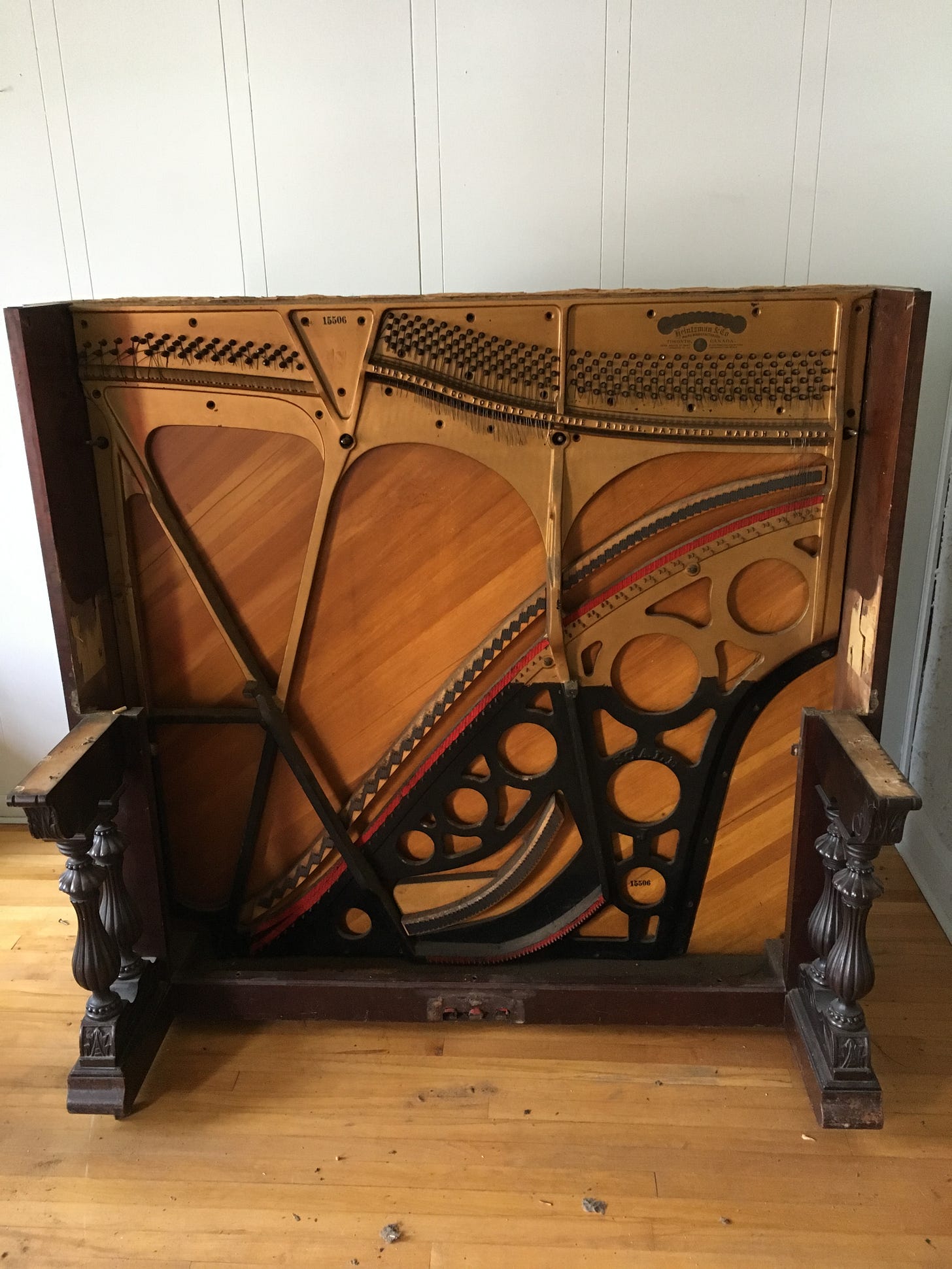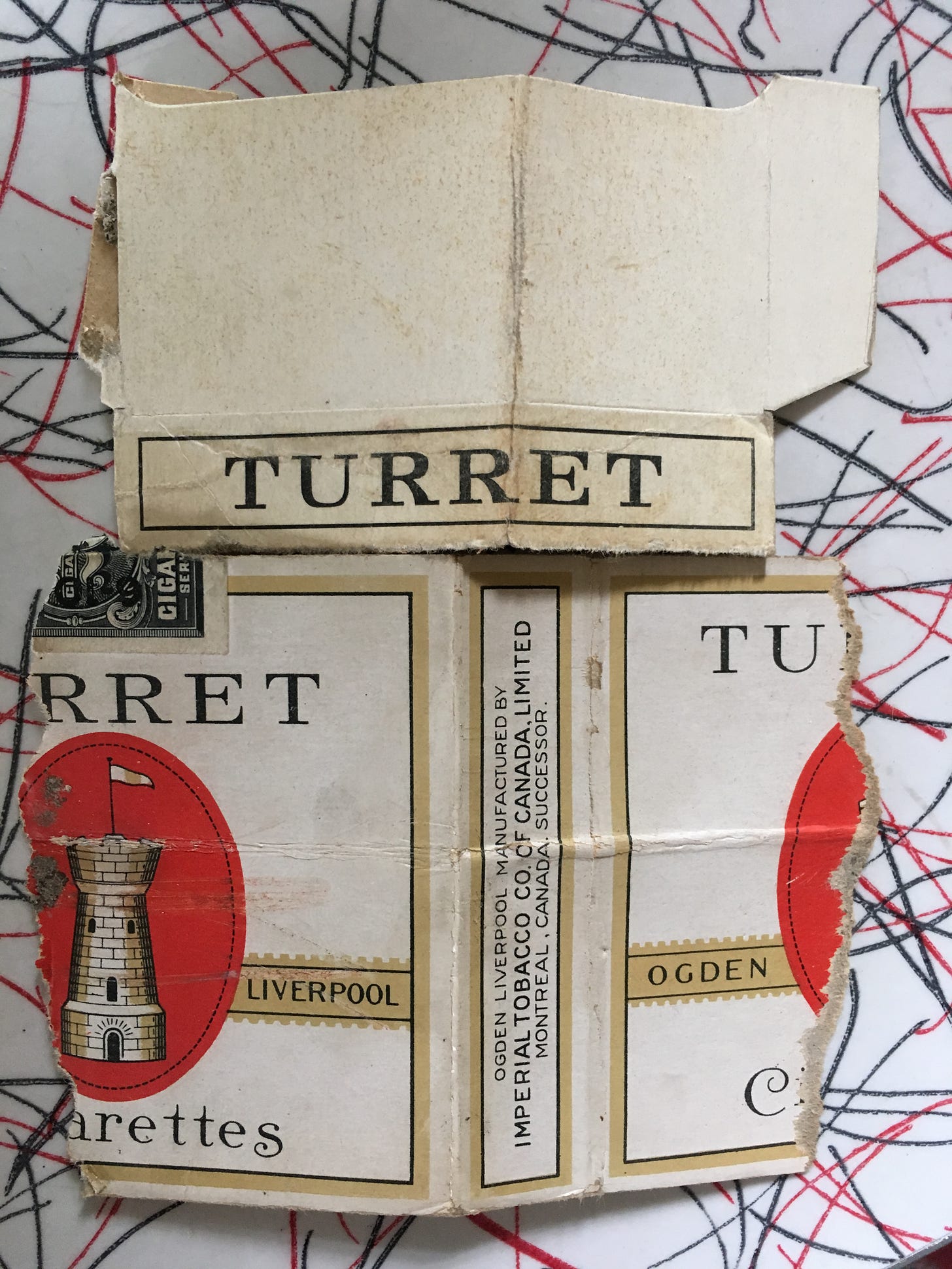A few years ago I moved out of a house that was being torn down and found myself responsible for the destiny of an old Heintzman piano…
This is a two part story. If you haven’t yet, read Part 1 here to get up to speed. The continuing story is below.
Step 5: The sledgehammer
The next day I carefully looked over the remaining frame once again.
And once again the old piano had no intention of giving up its secrets.
How would I take this apart?
I could not see a way forward. Leaning on my weapon of choice, I found myself in a stare down. And the piano wasn’t blinking.
Maybe I was running out of patience. Maybe I was out of ideas. But my sledgehammer plan seemed like the only viable one. I’d simply swing hard and knock off the two front legs and get on with it.
Decision made, I quickly put my hands on the sledgehammer and held my breath.
After two hard swings, the first leg came flying off and hit the wall. The piano fell two inches to the floor on one side with a heavy thud.
Without thinking, I took a swing at the second leg.
As it flew off, the back of the piano with the weight of the cast iron harp and remaining hardwood, came crashing down in front of me.
One, I’m glad it didn’t break my foot, leg or worse. And two, I’m glad it didn’t go through the floor into the basement below.
After realizing my close call, I collected myself, shook off the shock and took a deep breath. I was still holding tight to the sledgehammer handle, watching the dust settle.
I stared at the back of the piano lying on the floor like a fallen gunfighter.
I stepped around it and walked to the back wall of the living room.
With the soul of the beast laying facedown in front of me, I started swinging at the thick hardwood pieces attached to the harp.
Regardless of how hard I swung, the wood didn’t budge.
This truly was some kind of 19th century wizardry.
The piano was down, but not out.
Step 6: The chainsaw
I had an electric chainsaw which I figured was the obvious next step.
I laughed at how ridiculous this situation had become.
I imagined having to smile and wave at puzzled neighbours through my front living room window as I wielded a chainsaw in my living room.
This kind of chainsaw would be much less intimidating though: the electric ones just sound like a loud hair dryer. Plus, they aren’t as toxic as a gas powered chainsaw would be indoors.
With any luck, my neighbours wouldn’t notice the insanity going on in the living room next door.
I filled the chainsaw with chain oil, plugged it in and got to work.
I started cutting the thick hardwood into blocks, careful to not go all the way through so the chain would hit the metal harp.
The chainsaw laboured as it cut through the hardwood. I’d never cut wood so tough. Each cut was taking several minutes and I wondered if the chainsaw was going to hold up.
The wood was about 8 inches thick and I was cutting it into manageable chunks. My hope was that I could then sledgehammer the chunks, knocking loose whatever was holding the wood to the backboard of the harp.
With sweat running down my face, I realized this was beginning to work. But only after an incredible amount of swinging.
I was making progress.

From here on in, it was a sledgehammer/chainsaw combo.
I was winning the battle.
But my conservation plan was a complete mess.
Step 7: The harp, the soul and the last stand
With most of the wood finally off the harp, I called in a friend. I thought the two of us could carry it out the door, down a small flight of stairs to the front lawn. From there we could load it onto a trailer destined for metal recycling and cash it in for a few bucks. It was time to put the piano’s soul to rest.
When my friend arrived, we both crouched down to carefully lift the harp onto its side without breaking our backs.
The weight of it was unimaginable. We barely got it up and against the wall.
And this time I did think about the next step carefully. I knew there was no way two of us were going to move the harp out the door, let alone down a small flight of stairs.
The soul of the piano had to stay with the house.
Epilogue
I’m no piano player, but I did take the time to record a few notes and chords on some of my songs for posterity. I’m glad I did.
In hindsight, I felt guilty being the last one to play the majestic instrument, given I can barely play a chord. Not the fitting tribute it deserved.
On the last day in the house, I took photos of the cast iron harp, the soul of the Heintzman. I was thinking again about the long history it had, well beyond my years.
My friend and I had leaned it against the wall in tidy fashion, figuring the wrecking crew would have the means to remove it and cash in on the metal.
I still have the beautiful face boards of the piano. They are gorgeous pieces of wood that I’ll use in a project one day.
I did carefully salvage the ebony and ivory pieces from each of the keys. To me, they were the most precious parts of the piano. I gave them to guitar luthier friends so the ebony and ivory bits can be installed in new instruments. I like to think the plants and animals they came from will continue to be honoured, while helping put more music out into the world.
After a final goodbye to the soul of the old piano, I walked out the door of the house for the last time.









